11 Patterns of Vintage Blue Ridge That Are Becoming Scarce
Blue Ridge pottery remains a favorite among collectors because of its hand-painted style and colorful designs. Many of these patterns were produced in limited runs, which makes them special today. Some have nearly disappeared from shops and estate sales. This makes them highly attractive to buyers who want something rare. With this in mind, it is helpful to know which patterns are becoming harder to locate.
This post may contain affiliate links, which helps keep this content free. Please read our disclosure for more info.
Blue Ridge Apple Pattern
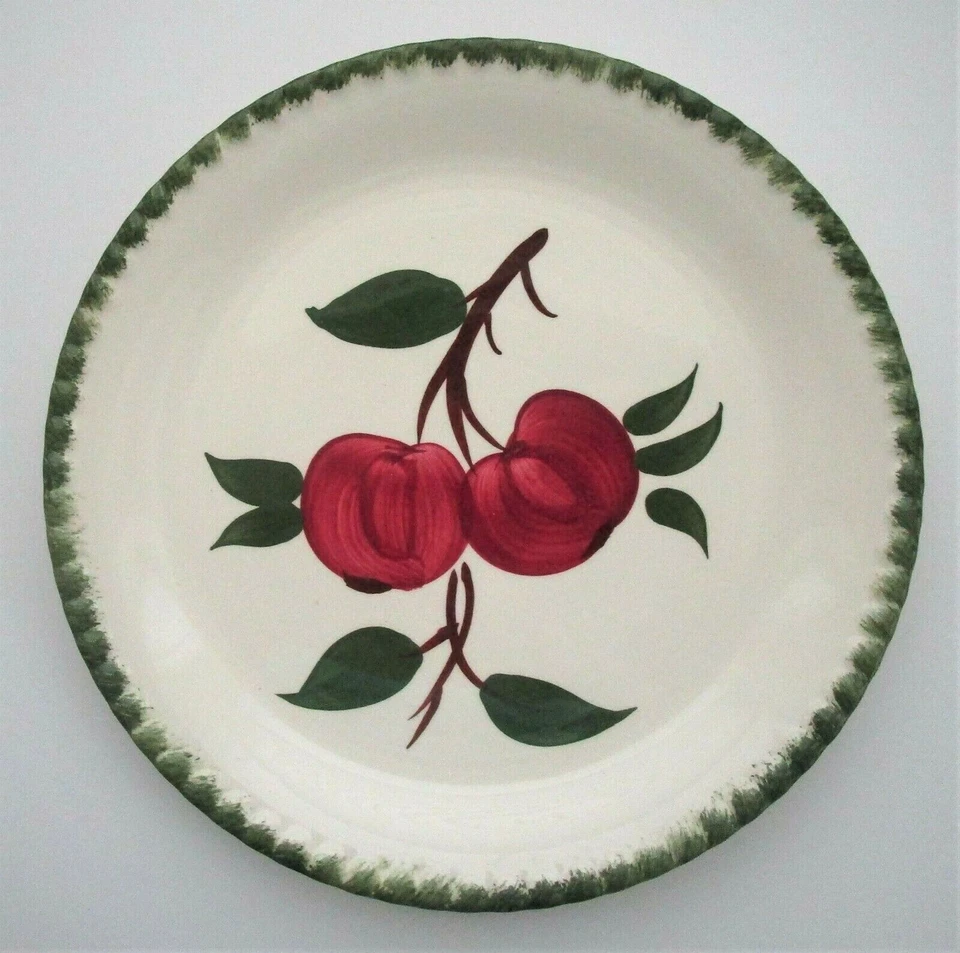
The Apple pattern was one of the earliest designs released in the 1940s. It featured red apples with green leaves, hand painted in bright colors. While once common, many pieces have chips or fading from everyday use. Collectors now find complete sets more difficult to locate.
Today, prices for single plates or bowls average $25 to $50. Serving pieces and platters can reach $150 or more. Condition plays a large role in value, with mint examples being the most desirable. Scarcity continues to increase as fewer intact sets remain available.
Blue Ridge Southern Rose
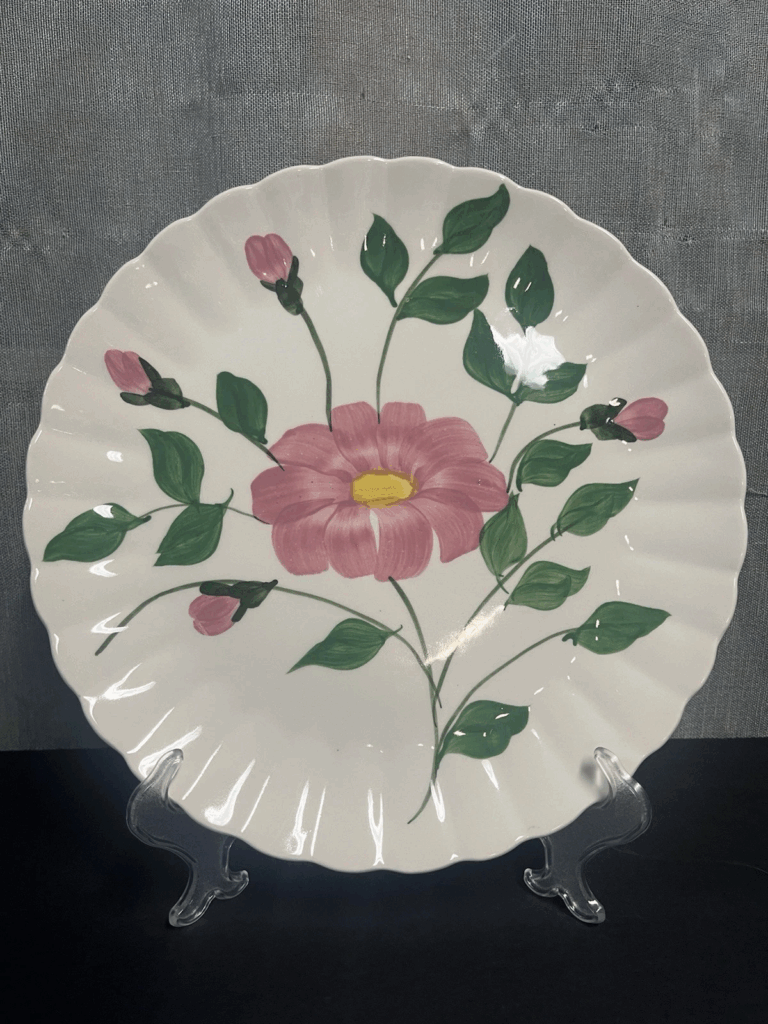
Southern Rose was introduced during the 1950s with soft pink roses and green leaves. It was popular at the time but produced in smaller runs compared to other floral designs. Because of its delicate painting, many surviving pieces show wear. Collectors now look for it in estate sales and auctions.
Current prices for cups and saucers are around $30 to $60. Larger serving dishes may bring $200 or higher. Sets with no fading or cracks attract stronger interest. The pattern’s gentle design makes it one of the more sought-after floral themes.
Blue Ridge Morning Glory
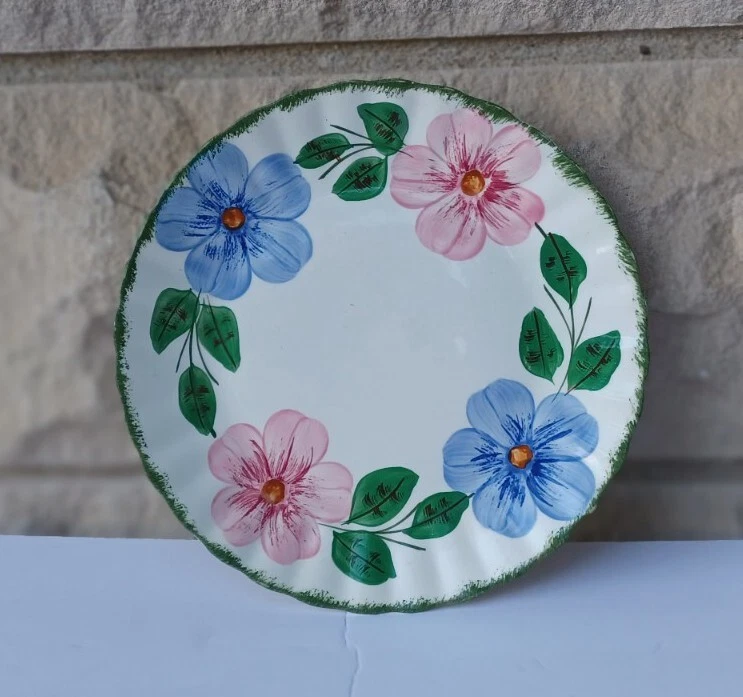
Morning Glory was produced in the 1940s with bright blue flowers and climbing vines. Its vibrant design made it stand out on dinner tables of the time. Over the years, its fragile paint has faded, making undamaged examples harder to find. Collectors seek it for both its beauty and rarity.
Market prices range from $40 to $90 for common dishes. Serving platters and coffee pots can bring $250 or more. Sets in perfect condition are especially hard to obtain. The scarcity has pushed values upward in recent years.
Blue Ridge Daisy Chain
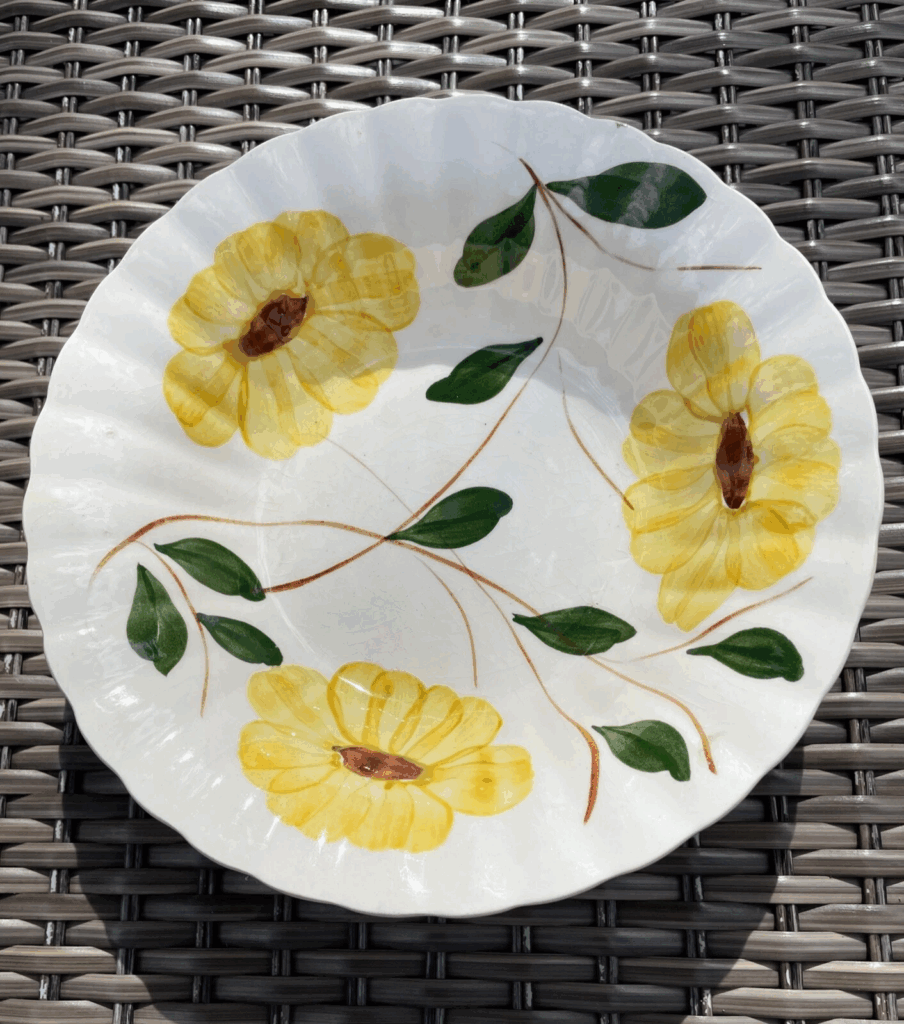
Daisy Chain offered cheerful white and yellow flowers with green leaves. Released in the early 1950s, it was a playful design used mostly on small sets. Because it was not made for long, surviving examples are rare. Collectors enjoy its simple yet bright design.
Market values range from $30 to $60 for cups and saucers. Serving bowls and platters can sell for $200 to $350. Full sets are very hard to assemble. Daisy Chain remains one of the more charming yet scarce patterns.
Blue Ridge Mountain Ivy
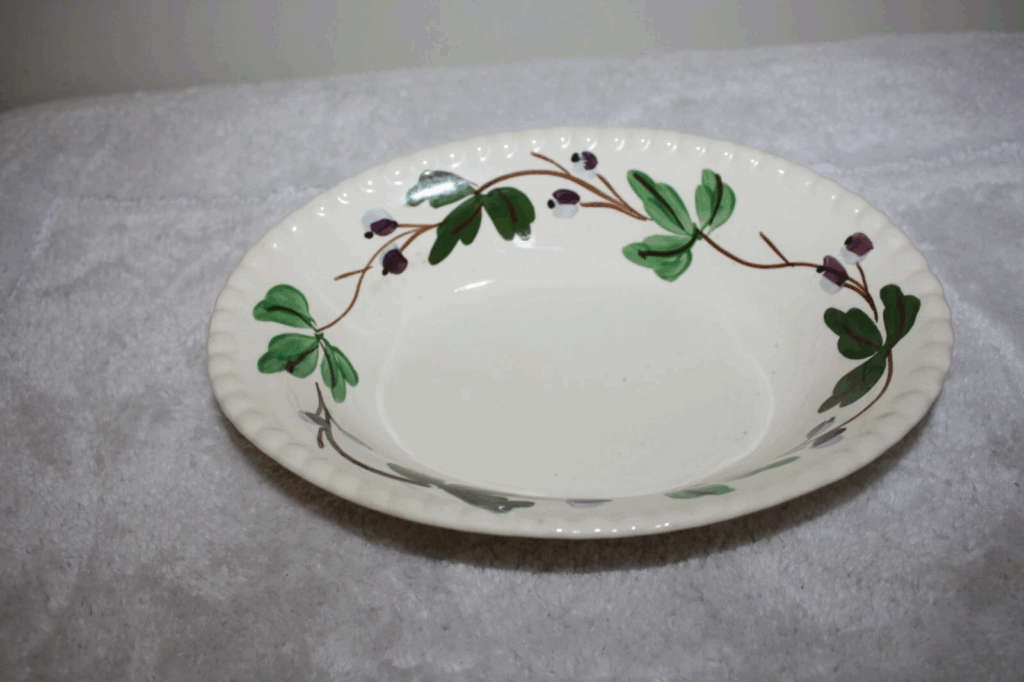
Mountain Ivy was a green and brown leaf design introduced in the late 1940s. It appealed to buyers who preferred natural themes instead of flowers. Production was limited, making it less common today. Collectors often search for matching serving pieces.
Prices for plates are usually $40 to $80. Large pitchers and covered bowls can exceed $250. Complete sets in mint condition are nearly impossible to find. This pattern’s scarcity makes it valuable among collectors of foliage themes.
Blue Ridge Dogwood Blossom
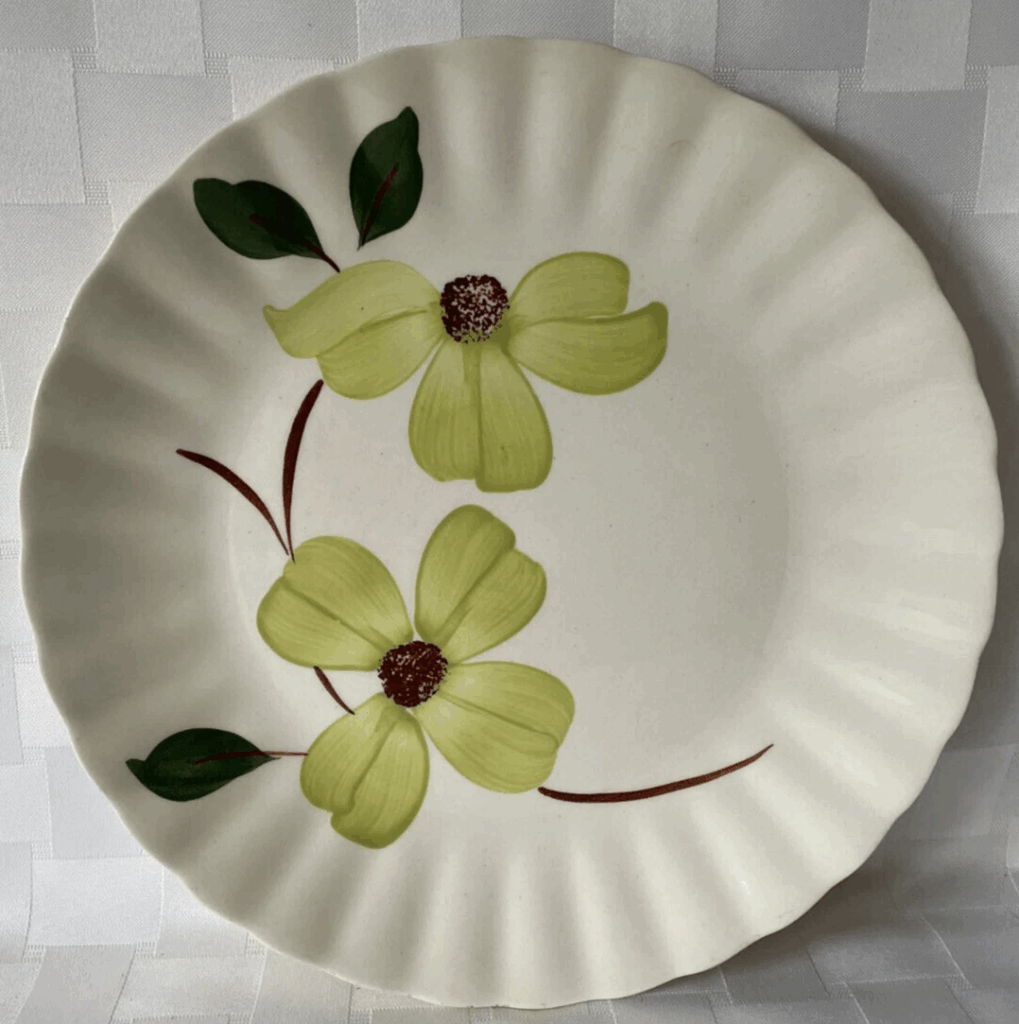
Dogwood Blossom was a delicate pattern reflecting the state flower of Virginia. It was produced in the late 1940s and early 1950s. Its fine detail made it difficult to paint, limiting how many pieces were produced. Collectors admire it as a regional favorite.
Smaller dishes usually sell for $50 to $90. Serving platters and pitchers can go for $300 or more. Collectors are willing to pay higher prices for flawless examples. Dogwood Blossom remains highly collectible due to its limited output.
Blue Ridge Cherry Festival
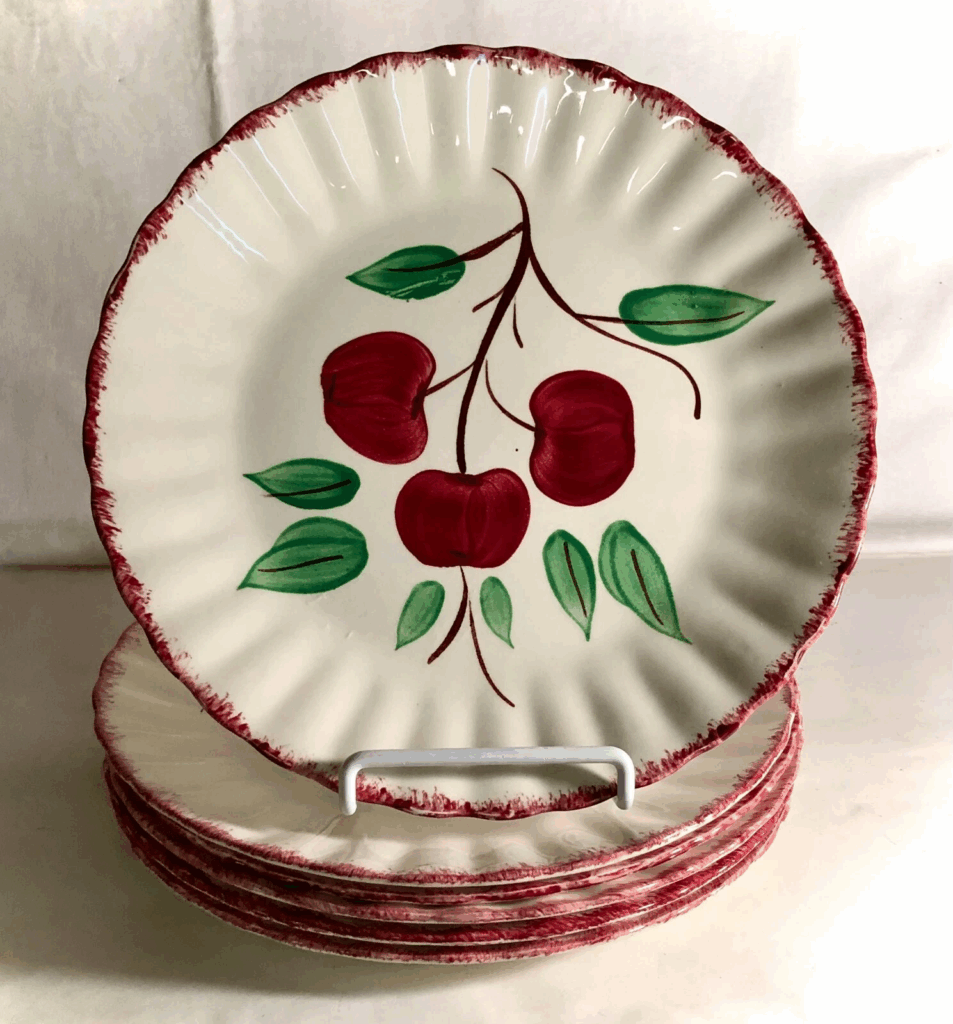
Cherry Festival showed red cherries with green stems, painted in lively detail. It was introduced in the early 1950s for summer tableware. The playful design was well-loved but not produced for many years. Surviving sets are scarce today.
Market values for small plates start around $40. Serving bowls or large platters can fetch $200 to $400. Collectors prize complete settings because they are rare. The cheerful design keeps interest strong in the resale market.
Blue Ridge Magnolia
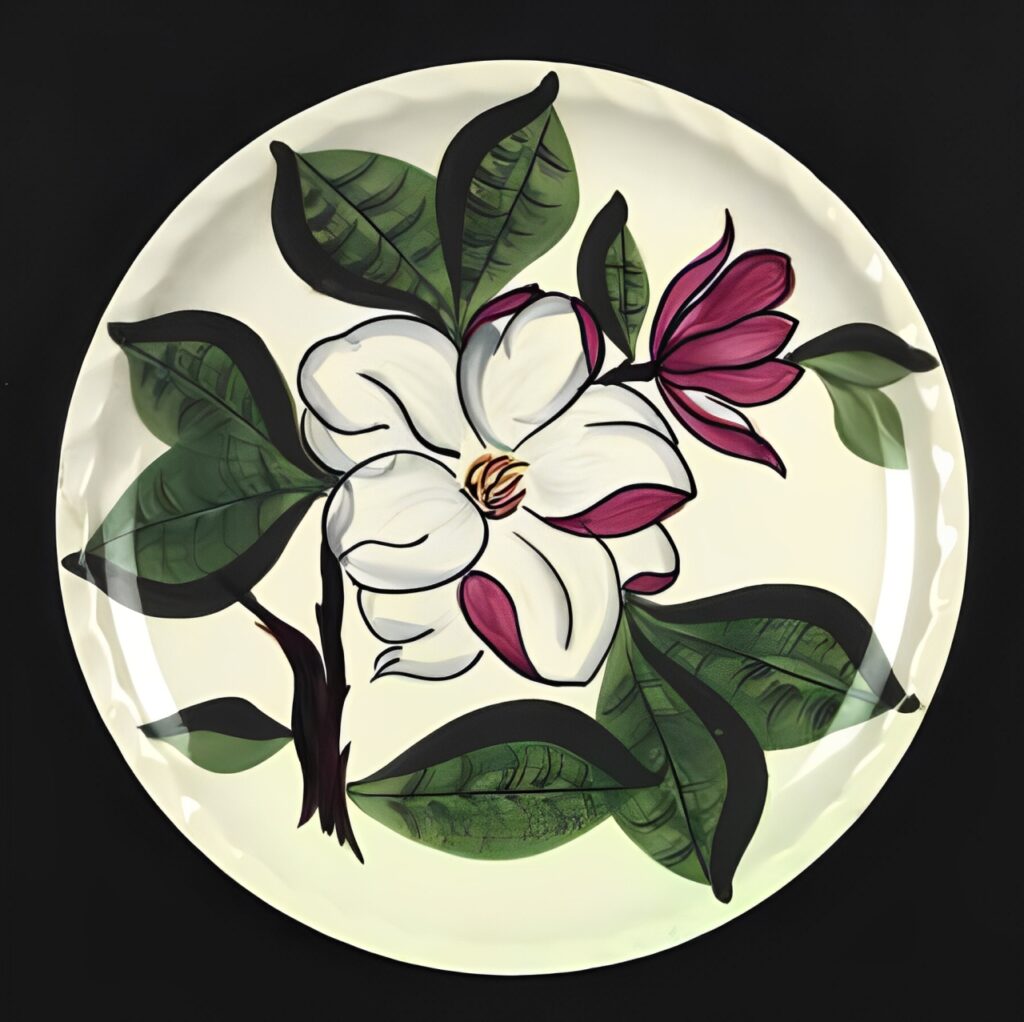
Magnolia was introduced in the early 1950s with large white flowers and dark green leaves. The design reflected Southern traditions and was admired for its bold look. It was produced for only a short time, making examples scarce. Collectors especially look for serving pieces and pitchers.
Market values range from $50 to $100 for small dishes. Serving bowls and trays can sell for $250 to $400. Complete sets are very difficult to assemble. The Magnolia pattern remains highly prized for both its beauty and rarity.
Blue Ridge Bluebell Bouquet
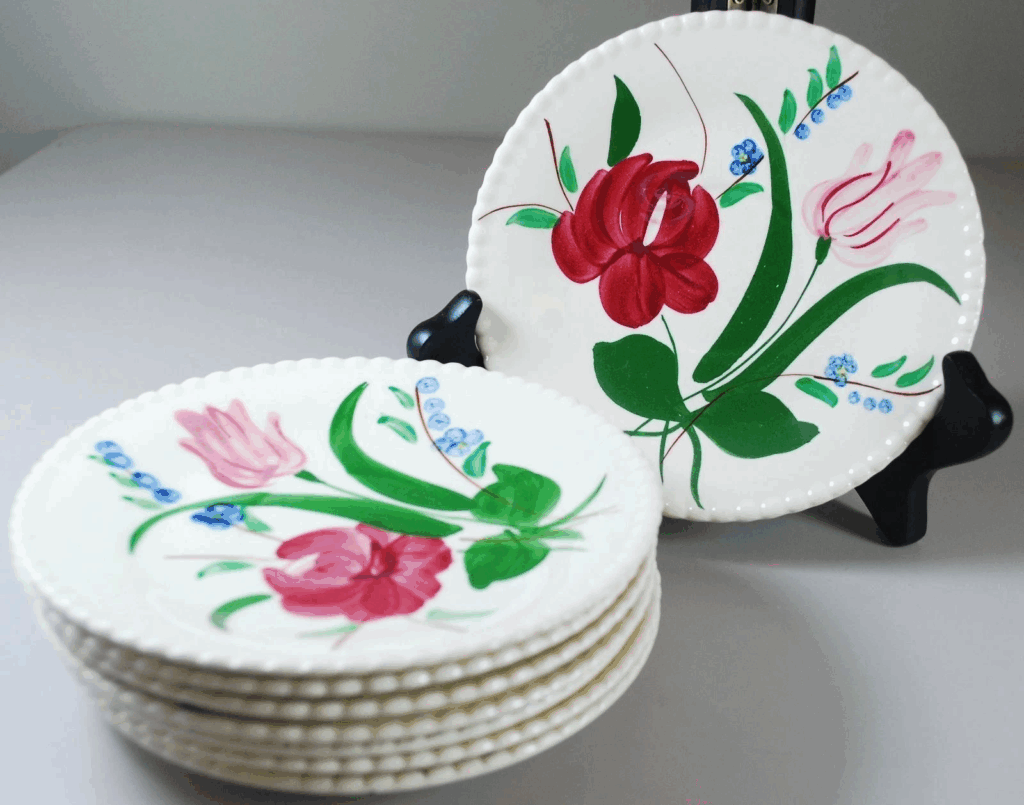
The Bluebell Bouquet pattern was introduced in the 1930s by Blue Ridge Southern Pottery. It features a vibrant floral design with bluebells and other colorful flowers, hand-painted on a white ceramic base. Because of its delicate nature and the limited production during the Great Depression, many pieces have been lost or damaged over time, making it increasingly scarce. Collectors often seek out this pattern for its historical significance and aesthetic appeal.
Currently, the market value for individual pieces such as salad plates or small bowls ranges from $20 to $50, depending on condition and rarity. Larger serving dishes or complete sets can fetch higher prices, sometimes exceeding $200. The pattern’s scarcity and the quality of craftsmanship contribute to its desirability among collectors. As fewer pieces become available, the value is expected to rise.
Blue Ridge Wild Strawberry
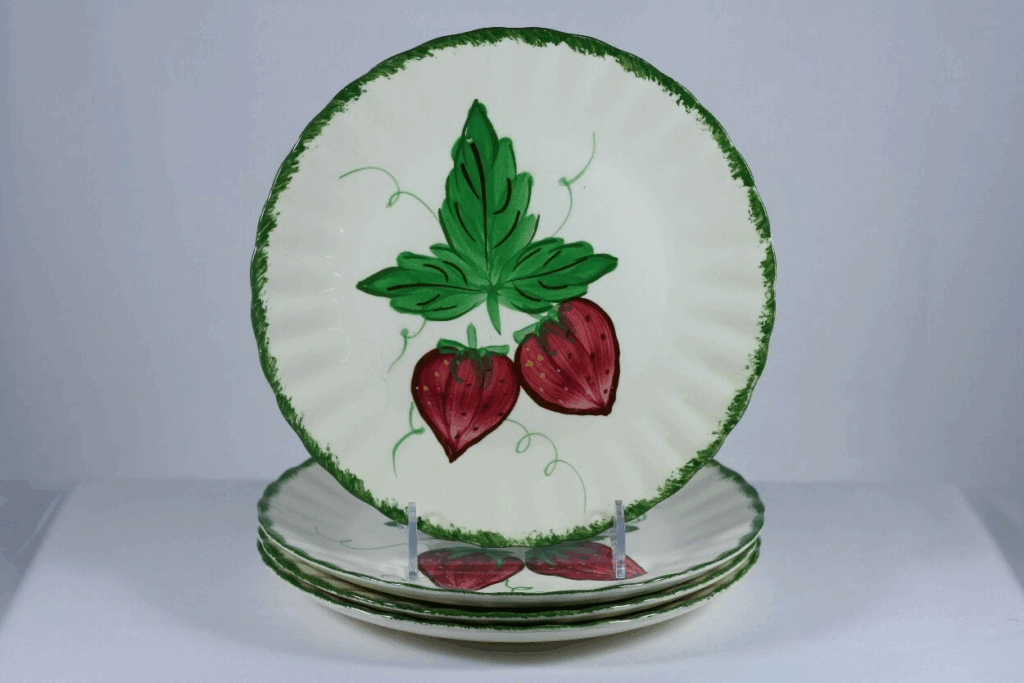
The Wild Strawberry pattern was part of Blue Ridge’s Colonial line, produced in the late 1930s into the early 1940s. This design showcases red strawberries with green leaves, hand-painted on a white background. Its production was limited, and many pieces were used in everyday settings, leading to wear and tear that has reduced the number of well-preserved items. This pattern’s association with the Colonial line adds to its historical value.
Market prices for Wild Strawberry pieces vary; small items like salad plates are typically priced between $20 and $40. More substantial pieces such as serving bowls or platters can range from $50 to $150, depending on condition and demand. The pattern’s scarcity and the enduring popularity of strawberry-themed designs maintain its appeal among collectors. As interest in vintage Americana grows, the value of Wild Strawberry pieces may continue to appreciate.
Blue Ridge Chintz
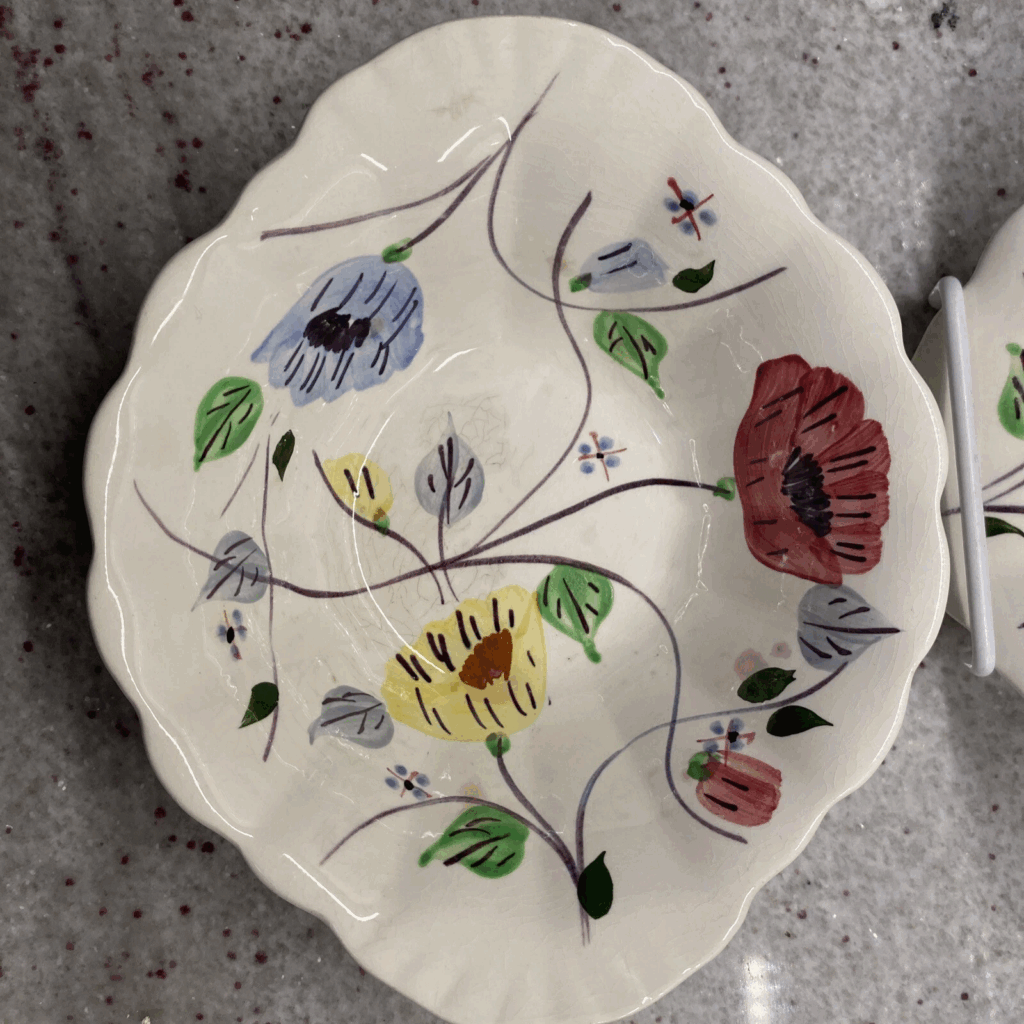
The Chintz pattern, introduced in the 1930s, features a delicate arrangement of pastel flowers on a white ceramic base. This design was part of Blue Ridge’s extensive catalog of patterns, many of which were produced in limited quantities. The Chintz pattern’s gentle aesthetic and the fragility of its paintwork have contributed to its scarcity today. Collectors value this pattern for its vintage charm and the craftsmanship involved in its creation.
Individual Chintz pieces, such as small dishes or cups, are generally priced between $15 and $40. More elaborate items like serving trays or pitchers can command prices ranging from $50 to $100, influenced by condition and rarity. The pattern’s scarcity and the enduring appeal of floral designs ensure its place in the hearts of collectors. As fewer pieces become available, the market value is likely to increase.
The beauty of Blue Ridge pottery lies in its colorful patterns and the stories each piece carries. As time passes, some designs have become scarce, making them more appealing to buyers and collectors alike.
This article originally appeared on Avocadu.
